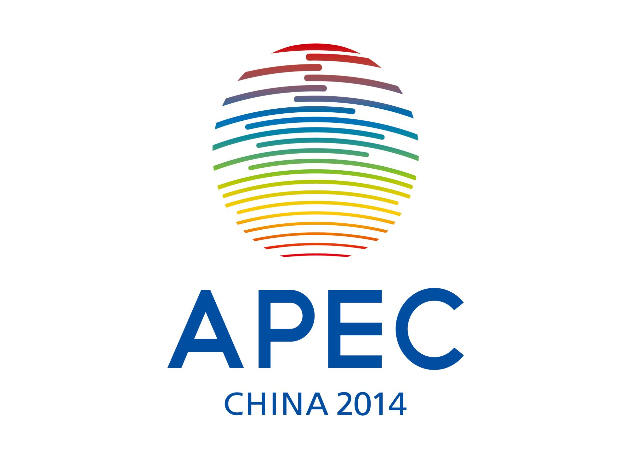The significance of the upcoming Asia-Pacific Economic Cooperation Summit in Beijing consists not so much in what is on APEC’s agenda as in what transpires on the sidelines. Meetings between Chinese President Xi Jinping and US President Barack Obama; as well as Xi’s meetings with Japanese Prime Minister Shinzo Abe loom especially large. These bilateral relationships constitute much of the strategic undercurrent of East Asian security at a time when the region’s long-term geostrategic stability has come into question.
The core reality is that the Asia-Pacific region comprises a group of rapidly globalizing twenty-first-century economies sitting on top of a set of nineteenth-century national tensions. That contradiction matters for the entire world, because the region accounts for some 60% of global output. Economically speaking, where Asia goes in the future, the world will follow.
But Asia is home to a multiplicity of unresolved territorial disputes. It is the epicenter of underlying tensions stemming from China’s rise and its impact on the United States, the region’s established power since World War II’s end. Indeed, many of the region’s territorial disputes pit China against US allies.
More broadly, the region’s rifts are endemic: a divided Korean Peninsula; territorial disputes between Russia and Japan, China and Korea, and China and Japan; the unique circumstances of Taiwan; and conflicting maritime claims in the South China Sea involving China, the Philippines, Indonesia, Brunei, Malaysia, Vietnam, and Taiwan. There are also long-standing border disputes between China and India, and between India and China’s ally, Pakistan.
As if that were not worrying enough, Asia has become the next global arms bazaar, with military outlays in the region now higher than in Europe. Moreover, six Asian states have nuclear weapons.
Both the tone and the content of the China-US relationship are a cause for concern. China argues that it is subject to a US policy of isolation and containment. It points to America’s “rebalancing” strategy, to military and/or diplomatic support for those countries with which China has bilateral territorial disputes, and US support for Japan’s revision of its post-WWII “peace constitution” as a precursor for what China views as significant Japanese rearmament.
The Chinese also see the commercial equivalent of containment in the US-proposed Trans-Pacific Partnership, which includes Japan but excludes China. Furthermore, Chinese leaders point to what they regards as intrusive US human-rights diplomacy aimed at fomenting political protest within China (including Hong Kong) and undermining the regime’s domestic legitimacy.
The US, no surprise, disputes these claims. For starters, the US argues that it is the various states of East Asia that have actively sought American support for their security, owing to their collective concerns about China. Moreover, the US insists that it is not containing China (as it did the Soviet Union); on the contrary, China’s economic rise has been facilitated by access to US markets, as well as to global markets through American support for Chinese accession to the World Trade Organization.
On human rights, the US argues that there are indeed fundamental differences between the two countries’ political traditions and current systems. But, in the American view, this is vastly different from an organized national strategy of undermining the Chinese state and its institutions.
For these reasons, the bilateral strategic-trust deficit is growing. Xi, to his credit, has advanced what he describes as a concept for “a new type of great power relationship,” one that seeks to avoid what others have concluded is the near-inevitability of long-term conflict between a rising power (China) and the established power (America).
It is imperative that both parties try to close the trust deficit. Doing so calls for a framework of what I call “constructive realism.”
Such a framework embraces realism about areas of contention defined by significant conflicting national interests and values. These issues should simply be peacefully managed over time, until sufficient political capital has been created in the rest of the relationship to address them directly.
At the same time, it is “constructive” in the sense of identifying areas of sufficient commonality to create new public goods, such as bilateral investment treaties, a non-nuclear Korean Peninsula, and a global agreement on climate change. A constructive realist approach should also begin to sketch the broad outlines of a long-term “common security” concept for East Asia.
The outlook for the China-Japan relationship appears somewhat better. Just a few months ago, the bilateral relationship had sunk to an all-time post-war low, owing to a toxic cocktail of territorial disputes over the Diaoyu/Senkaku Islands, Japan’s handling of its wartime history (particularly prime ministerial visits to the controversial Yasukuni Shrine), and Chinese fears about Japanese rearmament.
But now both governments appear to have recognized the growing risk of unintended conflict in the seas and airspace around the disputed territories, given the sheer concentration of naval and air assets in a limited space and the absence of effective protocols to manage incidents and prevent them from escalating. Both sides have concluded that even limited armed conflict would be disastrous.
Moreover, with Japan and China facing increasing economic uncertainty, they have recognized that it makes sense for the world’s second and third largest economies to remove major political impediments to expanded bilateral trade and investment. For these reasons, barring any last-minute diplomatic indelicacies, the APEC Summit is likely to represent the start of a formal thaw in Sino-Japanese relations.
APEC, an Australian diplomatic initiative launched 25 years ago, was originally conceived as an exclusively economic forum. Fortunately, it has also become an annual forum for US, Chinese, Japanese, and other leaders to engage with one another on critical questions of long-term strategic stability. The future of the region’s economy and the global economy and the stability upon which they are predicated will be powerfully shaped by the outcome of these deliberations.
Copyright: Project Syndicate, 2014.
www.project-syndicate.org

